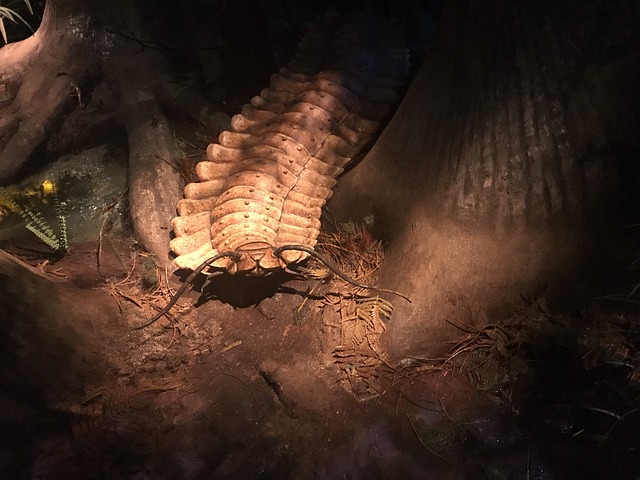Centipedes, invasive pests drawn to dark, moist environments, enter homes and businesses through small cracks and gaps around doors, windows, and pipes. Professional centipede treatment services focus on identifying these entry points via thorough inspections, sealing access points, and addressing environmental factors like moisture and foundation cracks for effective, long-term control. Regular inspections are key to early detection and prevention of infestations, providing peace of mind for property owners.
Centipedes, though unwelcome intruders, can be diligently detected and controlled through expert inspections. Understanding their behavior and preferred entry points is key to effective centipede treatment services. This article delves into these aspects, guiding both residential and commercial spaces on navigating the challenges posed by centipedes. By exploring common entry points and implementing tailored strategies, you can significantly enhance your centipede control efforts, ensuring a more comfortable living or working environment.
Understanding Centipede Behavior and Entry Points
Centipedes are invasive pests known for their large size and multiple legs, making them both visually striking and a cause for concern for homeowners. Understanding their behavior is key to effective centipede treatment services. These creatures prefer dark, moist environments, often seeking refuge in cracks, crevices, and areas where water accumulates. They are attracted to organic matter, such as rotting wood or leaves, which provides them with food sources. Centipedes are excellent at hiding, making it challenging to spot their entry points. However, their tendency to travel along pipes, walls, and floors, seeking warm and humid environments, offers clues to their intrusion routes.
By identifying these pathways, centipede treatment services can be more targeted and efficient. Experts in this field will inspect areas around the foundation, including basements, attics, and crawl spaces, for signs of centipede activity. They may also check for moisture issues, as centipedes are drawn to humid environments, which could indicate potential entry points. Understanding centipede behavior allows professionals to develop tailored strategies, ensuring a successful centipede control plan.
The Role of Professional Inspections in Centipede Control
Professional inspections play a pivotal role in effective centipede control, offering a systematic approach to identifying and addressing entry points. These meticulous assessments, conducted by trained pest control specialists, are instrumental in locating areas where centipedes infiltrate homes or commercial spaces. Through advanced techniques, inspectors can uncover hidden cracks, gaps, or crevices that serve as pathways for these invasive pests. By pinpointing these entry points, centipede treatment services can be targeted and tailored to specific needs, ensuring maximum effectiveness.
The process involves a comprehensive review of the property’s exterior and interior, including hard-to-reach areas often overlooked by homeowners. Experts utilize specialized tools and knowledge to detect signs of centipede activity, such as distinct silk trails or distinctive damage caused by their mandibles. This early detection allows for prompt action, preventing centipedes from establishing breeding grounds and spreading to other areas within the structure. Consequently, professional inspections serve as a proactive measure, providing peace of mind and safeguarding against the potential health risks associated with centipede infestations.
Common Centipede Entry Points in Residential and Commercial Spaces
Centipedes, with their distinctive many-segmented bodies, are a common pest in both residential and commercial settings. Identifying their entry points is crucial for effective centipede treatment services. In homes, centipedes often find their way through small cracks and crevices, especially around doors, windows, and utility pipes. They are attracted to dark, humid places and may nest behind baseboards, under carpets, or in wall voids. Commercial spaces face similar challenges, with entry points including gaps around doors, vents, and windows, as well as hidden spaces within walls and floors. Regular inspections by pest control experts can help pinpoint these hard-to-detect access points and ensure a thorough centipede treatment plan.
Effective Centipede Treatment Services: Strategies and Benefits
Centipede treatment services are essential for effectively managing and eliminating centipede infestations. Professional pest control experts employ a range of strategies to target these persistent pests, ensuring a comprehensive solution. One key approach is identifying and sealing entry points, which involves thorough inspections to locate where centipedes are entering homes or buildings. By blocking these access points with seals and appropriate materials, the spread of centipedes can be significantly reduced.
The benefits of centipede treatment services extend beyond immediate pest control. It includes preventing future infestations by addressing the environmental conditions that attract centipedes, such as moisture issues and cracks in foundations. Regular inspections and maintenance are crucial components of these services, ensuring that any new centipede activity is promptly identified and treated. This proactive approach not only protects properties but also provides peace of mind for homeowners.
Expert inspections play a pivotal role in effective centipede control, helping to identify subtle entry points and implement tailored treatments. By understanding these pesky critters’ behavior and common access points, both residential and commercial spaces can benefit from professional centipede treatment services, ensuring a peaceful and pest-free environment.
